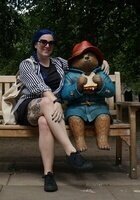All AP World History Resources
Example Questions
Example Question #451 : Cultural History
Most Oceanic artwork dates from the 1700s onward because _________________.
the islands in Oceania hadn't been settled until the 1700s
the locals did not have artistic traditions until the Europeans arrived
a local religious leader, named Savonarola, burned all the artwork made by previous generations
of native cultural prohibitions in the generations prior to contact with Europeans
the art was made from perishable materials
the art was made from perishable materials
Most Oceanic artwork dates from the 1700s onward because they were made from perishable materials.
Art, including masks, sculpture, and decorative textiles existed all over the island cultures of Oceania, and were recorded as already existing by the initial European explorers.
The islands of Oceania were settled centuries and millennium prior to the 1700s.
Savonarola was a religious leader on the Italian peninsula who burned much Renaissance art; he was not from Oceania.
Example Question #452 : Cultural History
In the late 18th century, France's revolution, its new empire, and continued exploration of the ancient Roman sites at Herculaneum and Pompeii led to _________________.
Medieval and Gothic tastes among the French elite
the domination of Napoleon's court by Italian advisers
Neoclassical tastes among the French elite
the use of the term "Renaissance," to describe France's growing power
such powerful and modern state institutions that France's hegemony was never troubled
Neoclassical tastes among the French elite
Neoclassical tastes among the French elite of the late 18th century were largely inspired by France's revolution, its new empire, and continued exploration of the ancient Roman sites at Herculaneum and Pompeii.
Medieval and gothic tastes were going out of fashion in the late 18th century.
Napoleon had many advisers over his life but Italians never dominated his court.
The "Renaissance" is a term largely attributed to Jacob Burckhardt, who studied the art and culture of Italy in between the middle ages and the modern era.
France's power was destroyed in the First World War, and again in the Second.
Example Question #13 : Literature, Art, And Architecture 1750 To 1900
Jean Francois Champollion is notable for ______________.
discovering the source of the Nile River
organizing a failed rebellion against Napoleon in French conquered Italy
being the first man to circumnavigate the Earth
uncovering the preserved tomb of King Tutankhamen
deciphering the Rosetta Stone and allowing people to understand Egyptian hieroglyphics
deciphering the Rosetta Stone and allowing people to understand Egyptian hieroglyphics
Jean Francois Champollion is notable for deciphering the Rosetta Stone and allowing people to understand Egyptian hieroglyphics for the first time. He achieved this in 1822, following the discovery of the Rosetta stone by French troops, fighting for Napoleon in North Africa.
Example Question #461 : Cultural History
Leo Tolstoy's, War and Peace, is partly an account of which conflict?
Russo-Turkish War
Russian Civil War
World War II
World War I
Napoleonic Wars
Napoleonic Wars
Tolstoy's War and Peace is set in Tsarist society during the Napoleonic wars and details, in part, the French invasion of Russia in 1812.
Example Question #461 : Cultural History
The discovery of the Rosetta Stone led to the translation of which of these ancient languages?
Sumerian
Egyptian
Hebrew
Phoenician
Bantu
Egyptian
The Rosetta Stone was found in the early nineteenth century. It contained both Egyptian hieroglyphics and Greek writing. This allowed Egyptian hieroglyphs to be translated for the first time.
Example Question #462 : Cultural History
Which of the following authors published the novel Frankenstein; or, The Modern Prometheus?
Samuel Taylor Coleridge
Percy Bysshe Shelley
Mary Wollstonecraft Shelley
George Gordon Byron
Jonathan Swift
Mary Wollstonecraft Shelley
Percy Bysshe Shelley was the husband of Mary Shelley, and while he wrote in the same time period, he is an incorrect answer. Byron was a friend to both the Shelley's — well known for the poem Don Juan — although he did not write Frankenstein, so he would not be a good choice. Jonathan Swift was best known for A Modest Proposal and he died before Frankenstein was published, so he would not be a suitable choice. Samuel Taylor Coleridge was a well known literary figure in the time, but he was predominantly a poet, so he would not be a good choice either. Lastly, Mary Wollstonecraft Shelley is the author, and although she published anonymously originally, she is now widely credited as the author, making her the best choice.
All AP World History Resources




